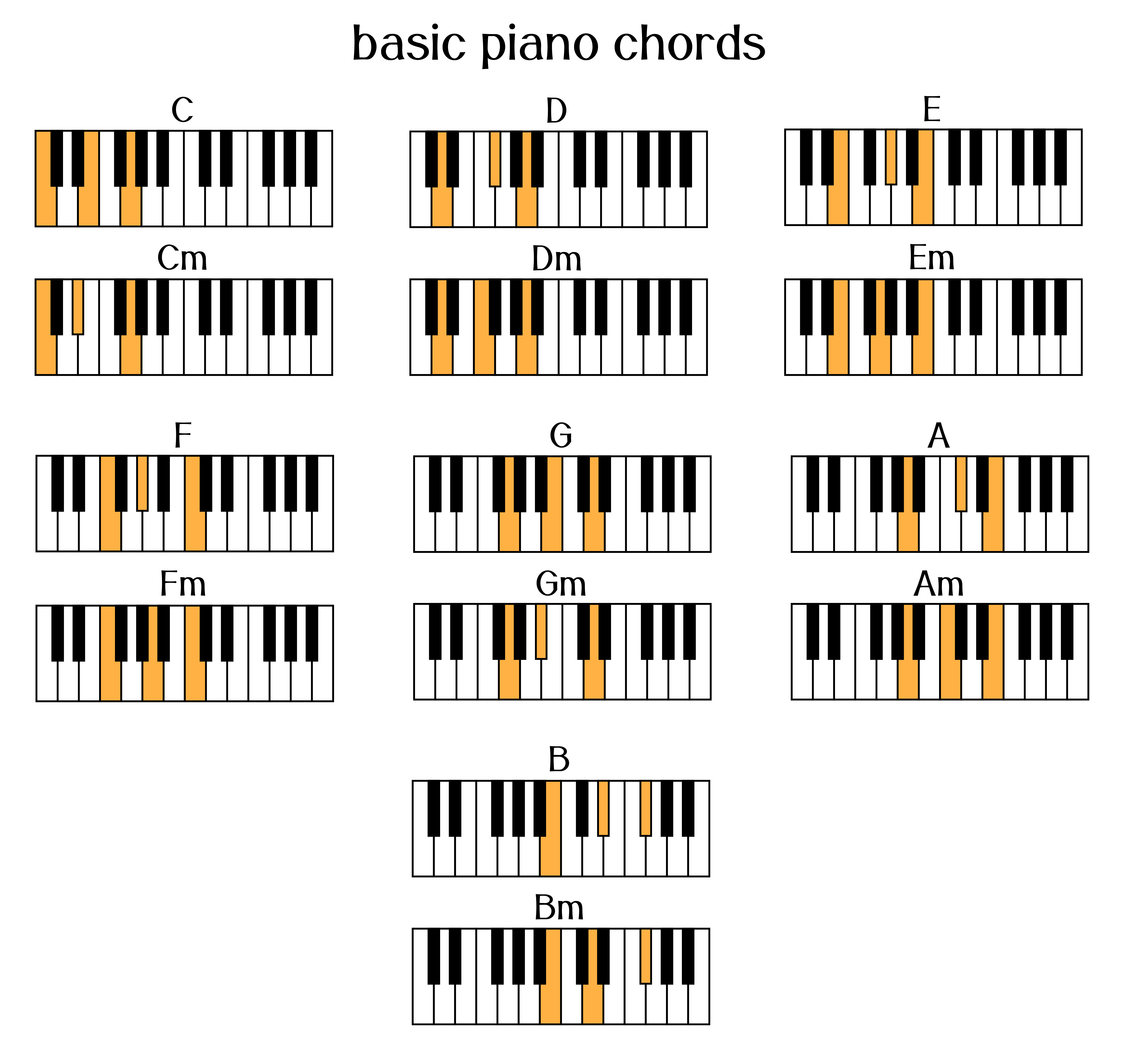Piano Chords: A Beginner’s Guide
Piano chords form the foundation of most pieces of music. For a beginner, understanding how chords are built and practiced is essential for developing musical fluency. This guide explains the basics of piano chords, explores different chord types, and shows how to integrate them into practice routines.
What Are Piano Chords?
In simple terms, a chord is a group of notes played together. On the piano, chords are typically built from three or more notes, often stacked in intervals of thirds. Learning piano chords allows beginners to accompany songs, recognize harmony, and create progressions.

Basic Types of Piano Chords
Beginners should start with three essential chord families: major, minor, and seventh chords. These are the building blocks of most music.
| Chord Type | Formula | Example (C chord) | Sound Quality |
|---|---|---|---|
| Major | Root + Major 3rd + Perfect 5th | C – E – G | Bright, happy |
| Minor | Root + Minor 3rd + Perfect 5th | C – Eb – G | Sad, mellow |
| Dominant 7th | Root + Major 3rd + Perfect 5th + Minor 7th | C – E – G – Bb | Bluesy, tense |
How to Learn Piano Chords Step by Step
- Start with C major. Learn C, F, and G — the most common chords in beginner pieces.
- Add minors. Practice Am, Dm, and Em to explore different moods.
- Play progressions. Combine chords in simple sequences like C – F – G – C.
- Use inversions. Rearrange chord notes to smooth transitions.
- Introduce 7ths. Add tension and color with seventh chords.
Practice Tips for Piano Chords
To master piano chords, consistency matters more than speed. Here are strategies for beginners:
- Practice slowly with a metronome to ensure accuracy.
- Play chord progressions in different keys to build versatility.
- Sing the root note while playing to improve ear training.
- Use both hands: left for bass, right for chords.
- Experiment with arpeggios (playing chord notes one by one).
Common Chord Progressions for Beginners
Chord progressions are sequences that form the harmonic foundation of songs. Here are a few to try:
| Progression | Chords in C Major | Style/Use |
|---|---|---|
| I – IV – V – I | C – F – G – C | Folk, hymns, classical cadences |
| I – V – vi – IV | C – G – Am – F | Pop ballads |
| ii – V – I | Dm – G – C | Jazz, standards |
Visualizing Piano Chords
Sometimes a diagram is more effective than a list. Below is a simple chord wheel scheme for understanding how chords connect in the circle of fifths:

Expanding Beyond the Basics
Once you are comfortable with major and minor piano chords, you can explore diminished, augmented, and extended chords (9th, 11th, 13th). These provide new textures and allow you to play more advanced repertoire. For beginners, adding one new chord type per week keeps learning steady and motivating.
Conclusion
Learning piano chords is an exciting step in becoming a confident pianist. By starting with major and minor chords, practicing progressions, and gradually adding complexity, beginners can quickly accompany songs, improvise, and understand harmony. Pairing this practice with recordings, exercises, and teacher guidance will ensure steady growth on your musical journey.